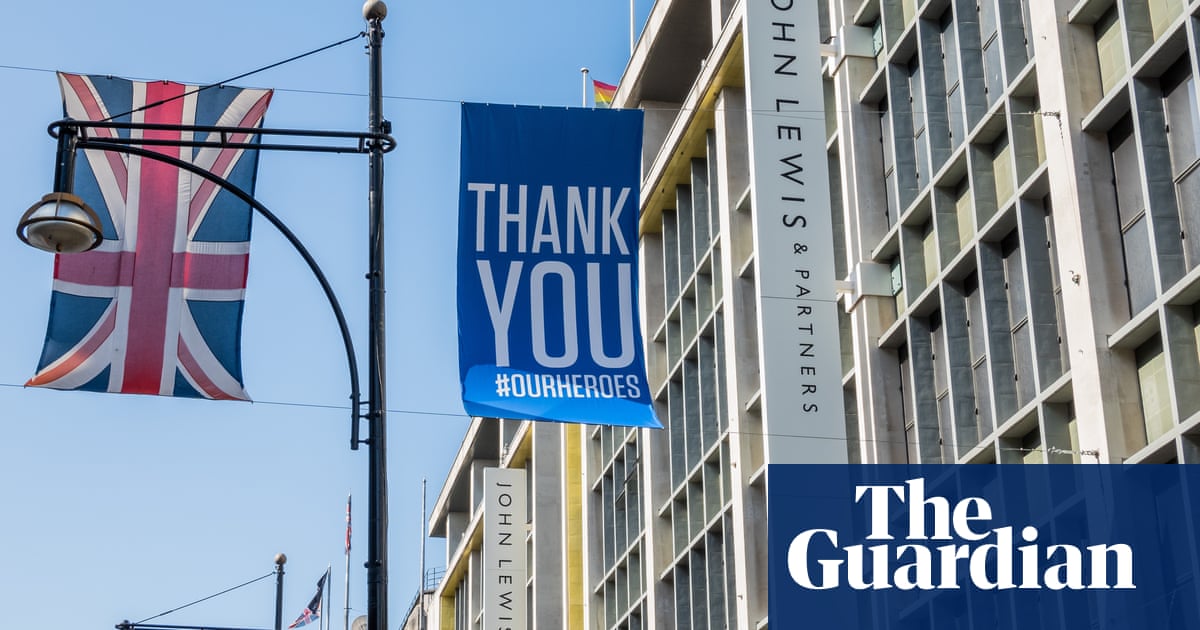
John Lewis is scrapping its annual staff bonus for the first time in 67 years after warning that it could be in line to record its first ever annual loss since the employee-owned business was set up in 1920.
The retail group, which includes Waitrose supermarkets, crashed £635m into the red in the first half of the year. The bulk of that decline was the result of a one-off charge, as the group wrote nearly £500m off the value of its department stores because they are no longer as profitable.
The retailer, which was struggling with the downturn on British high streets and the switch to online shopping even before the pandemic hit, made £192m last year.
Sharon White, chair of the John Lewis Partnership, said the retailer did not expect to start paying a staff bonus again until its profits exceeded £150m, but she promised a payout of at least 10% if profits rose about £300m.
The annual bonus goes to all staff, from the chairman to Saturday shelf stackers, with everyone receiving the same percentage payout. In seven of the last 10 years it has been 10% or more. However, in March this year the payout was just 2% of salary, the lowest level in 67 years.
White, a former civil servant who joined the retailer earlier this year, said: “I know this will come as a blow to partners who have worked so hard this year. The decision in no way detracts from the commitment and dedication that you have shown.”
She said John Lewis was writing down the value of its department stores because of their poor performance. Only 30% of online sales are now linked to a store, compared with 60% before the pandemic. Online sales rose by 73%.
Excluding one-off charges, the retail chain made an underlying loss of £55m in the six months to the end of July, only a slight deterioration on 2019, and White described the result as “a creditable performance in the circumstances” and better than anticipated.
White said sales at the department stores suffered from weeks of closures during the high street lockdown, the switch to buying online, and continued interruption to daily life from the coronavirus.
Trading patterns underline the impact of the lockdown. Sales of fashion slid 28% in the half-year as events were cancelled, offices closed and pubs and clubs shut down. A near 400% rise in sales of leggings – as the nation worked from home – failed to offset the drop in sales of formal clothing.
Since reopening, the company said stores were doing better than expected, with sales down 30% overall.
Its London stores, however, are performing worse. Their sales are down 40% as tourists and commuters stay away from the capital. Earlier this week, it emerged that John Lewis has applied for planning permission to shrink the shopfloor at its flagship Oxford Street store by 40% and convert the unwanted space to offices.
However, Pippa Wicks, the new executive director of the chain, said she was optimistic about Christmas spending, and expected to ring up at least the same level of sales as last year in the runup to the festive season. She said the group expected families who had saved money on holidays, trips abroad and travel to work to switch their spending to festive celebrations at home.
White added: ‘This is not naive optimism, we recognise there is uncertainty in the economy and lockdowns and we are planning very actively how customers can really celebrate the end of what’s been a pretty difficult year.”
The group permanently closed eight of its 50 department stores in July and said online sales account for 60% of sales, up from 40% before the pandemic.
“The pandemic has brought forward changes in consumer shopping habits which might have taken five years into five months,” White said.
Next month she is due to unveil her strategy to restore the fortunes of the retailer. She is expected to set out plans to generate sales from new sources away from the high street, to start selling investment products, and to move into building affordable homes and offering gardening services.
Waitrose sales rose almost 10% as shoppers stockpiled ahead of the high street lockdown.
The company said Waitrose.com orders were up 9% in the first week of September after the grocer split from Ocado, which now stocks Marks & Spencer groceries instead. The group plans to increase delivery capacity by 50% to 250,000 orders a week.












